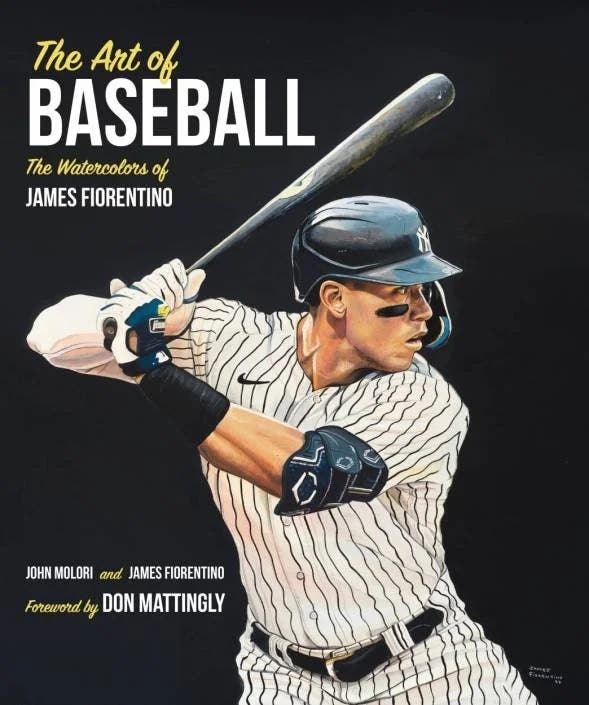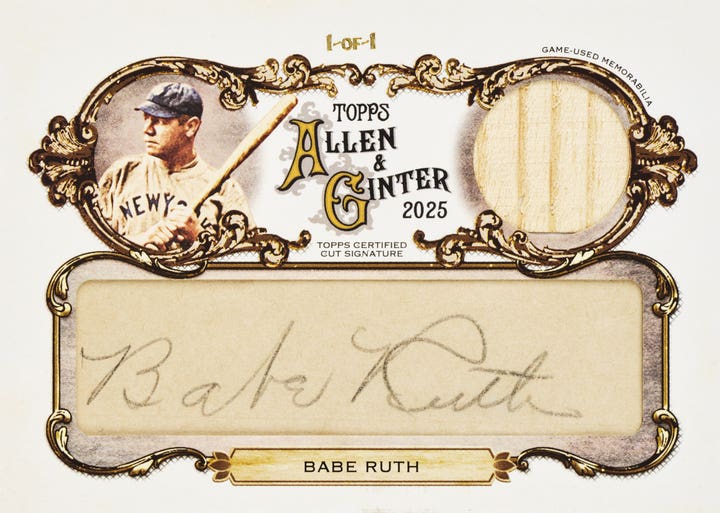News
Topps cards, NFL football, and America in the 1960s
By James Mercer
It was 1960 and change was everywhere. The Fabulous Fifties had become the Sensational Sixties.
The music industry was seeing dramatic changes. Rock and roll’s pioneers of the 1950s were either dead (Buddy Holly), in jail (Chuck Berry), in the Army (Elvis Presley), in the ministry (Little Richard), or in exile (Jerry Lee Lewis). But the music of the new decade was on the horizon, being created in places like Chicago, Detroit, Southern California, and Liverpool.
The change in movies and television can be described in one word: color. Black and white entertainment was rapidly becoming a thing of the past. The last movie shot entirely in black and white to win the Academy Award as best picture in the Twentieth Century (“The Apartment”) was, in fact, released in 1960.
The American sports scene was no different. There was a new direction for boxing taking shape in Louisville, Kentucky, where a teenager named Cassius Clay was training for that year’s Summer Olympic Games in Rome.
Expansion was taking place in the four major professional team sports. Sports moguls could not fail to notice that the American population was both expanding and moving in southerly and westerly directions.
Hockey would be the last to expand but do it most dramatically, with the National Hockey League doubling in size from six to twelve teams for the start of the 1967-1968 season.
Basketball would do so for the 1961-1962 season, the National Basketball Association adding the now all but forgotten Chicago Packers, who moved to Baltimore two years later due to a lack of support from fans in the Windy City.
Major League Baseball would precede basketball by only a few months, adding American League teams in Minneapolis and California.
Football, however, was the first major sport to add new franchises. The American Football League began play that year in places that had never had a major league franchise in any sport, such as Houston, Denver, and Oakland. Its inaugural season was marked by the release of its own 132-card set by the Fleer Corporation.
The 1960 Fleer AFL football set is perhaps most significant for two things besides having the first cards of the new league. First, it showed almost all of the AFL players in their college uniforms, since the set “went to press” before team uniforms were designed, created, and distributed to players. Second, since the set was created and issued in the pre-season, it contained a significant number of men who were released soon after and never played a down in the AFL in 1960 or ever.
The National Football League saw its own changes, including a new commissioner – Pete Rozelle. The NFL expanded into the growing Texas market, hoping that the new Cowboys franchise would prove more successful than the failed Dallas Texans of 1952.
The league, inexplicably, added only one new member, resulting in 13 teams. This would be the last time the NFL would have an odd number of teams, since the Minnesota Vikings were added the following year.
It would also be the last year with a 12-game schedule, two games being added for the 1961 season. This 13-team lineup resulted in six games played each Sunday (no Monday or Thursday night games then) and one team receiving a “bye” each week. The reaction of the teams who got their bye in the first or second week can only be imagined.
Naturally, a 13 week schedule meant a shorter season and but two teams made the post-season. The single playoff game in 1960 was the “NFL Championship Game” (no Super Bowls for another six years and no games in January, much less February), which was played on Monday, Dec. 26, 1960, in deference to Christmas Day falling on Sunday. The Philadelphia Eagles defeated the Green Bay Packers 17-13.
The league’s Most Valuable Player for 1960 was Norm Van Brocklin and the NFL Coach of the Year was Buck Shaw, both of the Eagles. Since the Eagles had the NFL’s best player and coach, as well as the league’s best record (10-2) that year, most pundits probably foresaw an Eagles dynasty. There is no record of anyone that year predicting a 56-year championship drought for the team.
One thing that did not change was the NFL’s relationship with Topps. For the fifth consecutive year, Topps issued a set of cards featuring NFL players. The set, unlike the 1959 set with its 176 cards, consisted of 132 cards. They were issued on the now-standard Topps sheet of 132, eliminating any short printed or double printed cards.
The card fronts, especially by football card standards, are attractive, drawing comparisons to the very popular 1957 Topps baseball set. There is a high quality portrait of the player, usually close up and without his helmet. The only other object on the front is a football in a lower corner, which contains the player’s name in a bright color and his position and team in smaller, black letters.
The pictures were obviously taken in pre-season camp. Trees and other pastoral scenes make up the background of the majority of cards. On some cards, such as Leo Nomellini (card #121) and Bob Toneff (#131), teammates can be seen doing football drills or even jumping jacks in the background. Los Angeles Rams defensive tackle “Big John” Baker (#70) is even posed in his three-point stance with a gaggle of tourists visible between his legs.
Topps seemed to have opted to save money by using pictures from their archives in lieu of sending a photographer to current training sites. This is obvious since players from the expansion Cowboys and other traded players like Art Hunter (#67) are all pictured in their old team uniforms, but again in preseason camp, evidently in 1959.
The card of Dallas’ Fred Cone (#34) is one of the set’s most interesting cards in this respect. He is shown in front of what must be a football grandstand but which most resembles an ancient castle or fortress. Further, he is shown in the uniform of the Green Bay Packers (for whom he last played in 1957). He is also listed as the Cowboys’ fullback but did not have a single carry or reception for the Cowboys in 1960, serving exclusively as the team’s placekicker.
Fans of today’s “America’s Team” might be interested to know that Cone was their team’s high scorer in that initial 1960 season which saw the Cowboys end with 11 losses, one tie, and not a single victory. They might also like to know that the Cowboys’ 1960 cheerleading squad was made up of a small group of high school students of both sexes.
Card backs of the 1960 football set are considerably less interesting and attractive. Besides the name and card number, statistics (other than the basics like height, weight, and college) are minimal and write-ups are brief. Backs and ends have no write-up at all and merely two lines of statistics – last year and life – for one category. For example, the card of future Hall of Famer Lenny Moore (#3) lists his pass receptions but nothing about his ball carrying.
Linemen have narratives of a sentence or two which make up for their lack of depth with a strong measure of hyperbole. Bob Gain (#30) “makes life miserable for opposing quarterbacks.” Dave Hanner (#59) “is murder on runners with his bear hug tackles.” John Nisby (#98) “can rock ‘em and sock ‘em in the line and charge downfield to toss earth-quaking blocks.” And George Tarasovic (#100) “tackles like a charging rhino.”
Most of the card back is taken up with a “Football Funny” which only becomes visible when scratched off with the edge of a coin. Topps abandoned the theme of its similar “Football Fun” of 1958 and “Magic Answers” of 1959. Those were scratch-off quizzes on football history, records, or rules. The “Football Funnies” in the 1960 set were lame jokes that were already outdated in 1960. Anyone who is tempted to scratch off the back of a 1960 football card should be aware that he is lessening the value of the card.
A minority of the gags do have a football theme. Examples:
Player 1: What is the hardest thing about playing football?
Player 2: The ground.
Player 1: Why are you late for practice?
Player 2: ‘Cause practice started before I got here.
Others are ancient vaudeville gags made into a “Football Funny” by having the lines spoken by players or coaches.
Player 1: Do you think mosquitoes cry?
Player 2: It’s possible. I’ve seen a moth ball.
Player: They tell me your son is a writer. Does he write for money?
Coach: Yes. In every letter.
It is truly regrettable that the high standard of the 1960 card fronts are not matched by equal quality on the card backs. The only good news is that 1960 marked the end as well as the beginning of the “Football Funnies.”
The card numbering system used by Topps in 1960 was for the first (but not last) time totally systematic. Players were grouped by team, with teams appearing in alphabetical order. Each team was represented by between nine and eleven cards. The players appear by position. Quarterbacks were always first, followed by running backs, then linemen, starting with ends and working inward to centers. This made the card of Colts quarterback Johnny Unitas #1 in every set organized in this manner, including Topps sets for the next three years. Topps, thankfully, did not reuse Unitas’ 1960 picture, in which his eyes seem to be bugging out of his head.
Defensive players were then presented in the order of linebackers, defensive backs, and finally defensive linemen with ends appearing before tackles.
The last card in each grouping is a team card for every team but the expansion Cowboys. The back of each team card contains a checklist. Topps evidently cut a corner by repeating the format of the 1959 checklists, even down to labeling them “First Series” and “Second Series” despite the fact that all 132 cards were (unlike 1959) issued in a single series.
In addition, the team card’s appearance in the set makes no difference as to which checklist it contains on the reverse. The Baltimore Colts team card (#11) contains the checklist for the “Second Series” (cards #67-132) while the New York Giants team card (#82) has the “First Series” checklist (cards #1-66). This numbering system must have been a success since Topps repeated it in each set up to 1963 and several times thereafter, although usually with some variation. For example, in the 1963 set the defensive players appear in no particular order.
There are no variations in the 132-card set, but there are enough errors to keep any error collector satisfied. The most infamous and inexcusable is Jim Taylor (#52). It purports to show the Hall of Fame Packers fullback but instead shows the St. Louis Cardinal linebacker of the same name. It is inexplicable how this error occurred since (a) Topps made the same error in 1959 and thus had a year to catch and correct the mistake, (b) the player wears a Cardinals uniform, (c) the player wears a linebacker’s number of 55, and (d) the players look nothing alike, with Cardinals Taylor looking like a handsome television cowboy and Packers Taylor looking like a grizzled Marine drill sergeant.
At least three reversed negatives also slipped by the Topps quality control people. Chicago Bears defensive end and Hall of Famer Doug Atkins (#20) seems to wear uniform number 18, a number worn by only quarterbacks in 1960. Rams quarterback Billy Wade (#61) seems to be wearing number 8 and throwing with his left hand. For the correct view, check out his card (#34) in the 1957 Topps set and you will see his uniform number is 9 and he is, indeed, right handed. A third reversed card is the most amusing. Pittsburgh Steelers offensive tackle Frank Varrichione (#97) seems to wear a number that most resembles hieroglyphics. Check out his 1958 card (#77) or merely hold the 1960 card in the mirror and you will see his true number is 74. Two other cards, Del Shofner (#65) and George Tarasovic (#100) also seem to be reversed based on their questionable uniform numbers.
There is no shortage of other errors either. Charlie Ane (#37) is misidentified on the reverse as “Charley.” Forrest Gregg’s (#56) first name is misspelled “Forest” on both sides of his card. Giants linebacker Sam Huff (#80) is listed on his card front as a defensive tackle, even though the back points out that he is regarded by many as “the finest linebacker in the game.” Philadelphia Eagles Bob Pellegrini’s (#88) last name is misspelled “Pellagrini” on both sides of his card. His teammate (and another Hall of Famer) Chuck Bednarik’s (#87) last name is likewise misspelled “Bednarick” on both sides of his card. Redskins quarterback Ralph Guglielmi’s (#123) last name is misspelled “Gugliemi” on his card front. Finally, his teammate Bill Anderson (#126) is called “Walt” on his card’s reverse, somewhat understandable as his real first name was Walter.
The error plague continues on the two checklists. Players are listed by last name and first initial except Cowboys defensive back Doyle Nix (#39) and Detroit Lions Hall of Fame linebacker Joe Schmidt (#46) who somehow merited their full first names. Redskin fullback Don Bosseler’s name is correct on his card (#124) but misspelled “Bossler” on the checklists. Otherwise, the mistakes found on the cards are repeated on the checklists. Sam Huff is again listed as a defensive tackle. And the “Pellagrini,” “Bednarick,” and “Gugliemi” misspellings continue. Topps may have been wrong but at least they were consistent.
There are no less than 11 other cards that could be called correct or erroneous depending on your perspective. Eleven of the 1960 team cards do not, in fact, show the 1960 team. Topps, instead, recycled the team pictures from 1959, merely relocating the team logos found in an upper corner from left side to right. The only two exceptions are the expansion Cowboys, who have no team card, and the Cardinals, who moved from Chicago to St. Louis for the 1960 season and merited a current team card with players in their new uniforms. Were the folks at Topps acknowledging the new city with a current team picture? Were they afraid someone in St. Louis, possibly a fan attending a game or one of the few with a color television, would spot the difference, despite the uniforms looking virtually identical? The answer is lost to history.
In spite of all the errors, the 1960 Topps Football set captures its era in an accurate and enjoyable manner. Now nearly 60 years later, it remains an interesting, entertaining, and highly collectible set. It is not difficult to locate cards for sale in Sports Collectors Digest or other hobby periodicals, especially cards in VG or VG/E condition.
Since the set is relatively small, it contains a high percentage of stars and Hall of Famers, as well as future coaches and broadcasters. There is only one Hall of Fame rookie in the entire set – Packers tackle Forrest Gregg (#56) – and his card is not overly expensive (less than $100 in excellent condition), probably due to his being an offensive lineman.
The superstars (Unitas, Jim Brown, Bart Starr, etc.) are, of course, more expensive but by no means prohibitively priced. Their cards in excellent or even excellent-plus condition sell in the hundreds, not thousands, of dollars.
In addition to all its other favorable features, the set is eminently affordable, with commons going for a few dollars each and the entire set currently listing for less than $1,000 in excellent condition.
In sum, any football fan or collector looking for a set that represents the sport and its time in history could do far worse than the 1960 Topps set.
James Mercer is a contributing writer to Sports Collectors Digest.








